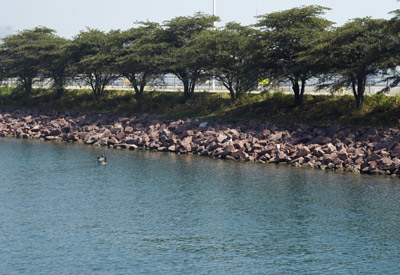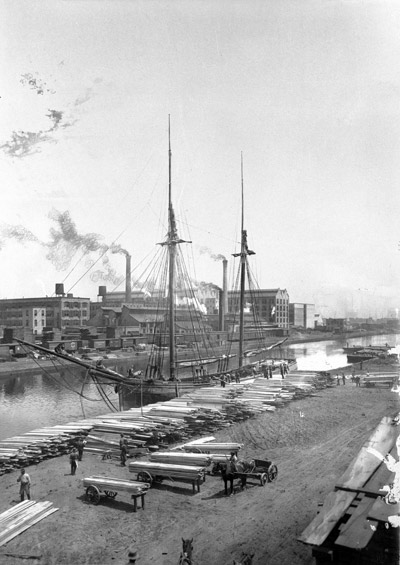The Boardwalk

Back to The Boardwalk
Back to The Boardwalk
Why a sea wall?
Sea walls like the one pictured here are one of many coastal defense techniques. They are used all along the city's downtown shoreline to protect economic and recreational centers like Michigan Avenue and Grant Park from heavy summer storms and the natural ebb and flow of Lake Michigan. But the most important coastal defense in this area are the breakwaters that sit just offshore. They are easily overlooked, but these rock and timber barriers helped transform a small military post into the commercial and cultural center it is today. They were built to shield the Chicago River, the region's busiest harbor in the 19th century, from heavy waves and drifting sand. Without barriers like these, the river mouth would have filled in with so much sand that shipping vessels would not have been able to dock in downtown Chicago.
Coastal defenses are not without their downsides. Both sea walls and breakwaters require constant, and often costly, maintenance. They also change the natural movement of water and sand. Artificial shorelines, especially vertical walls, can't absorb wave energy as well as natural ones, causing waves to bounce back with more force than they should. These stronger waves crash against land beyond the protection of the sea wall and rapidly erode that shoreline. At the same time, sea walls, breakwaters, and other man-made structures trap sand and dirt and prevent them from replenishing beaches down shore, exposing finer lakebed sediments there to waves they cannot withstand.
Coastal defenses are not without their downsides. Both sea walls and breakwaters require constant, and often costly, maintenance. They also change the natural movement of water and sand. Artificial shorelines, especially vertical walls, can't absorb wave energy as well as natural ones, causing waves to bounce back with more force than they should. These stronger waves crash against land beyond the protection of the sea wall and rapidly erode that shoreline. At the same time, sea walls, breakwaters, and other man-made structures trap sand and dirt and prevent them from replenishing beaches down shore, exposing finer lakebed sediments there to waves they cannot withstand.

